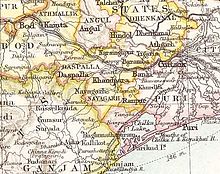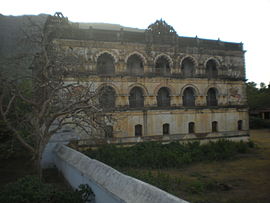
Dhenkanal State was one of the princely states of India during the period of the British Raj. The state is now referred to as Dhenkanal district, Odisha, with Dhenkanal town as its district headquarters.

Raj-Ranpur is a small town in the district of Nayagarh in the eastern Indian state of Odisha. The town is also known as Ranpurgarh or simply Ranpur as per the modern usage. The town is historically significant especially during the British Raj when it was the capital of the princely state of Ranpur. The martyrs Shaheed Raghu-Dibakar who were hanged for their resistance to British rule belong to this place. Rajsunakhala and Tangi are the nearest Town of Raj-Ranpur, which in almost 10 to 20 km from the town. Rajsunakhala is the most important business centre in Ranpur block under Nayagarh district.
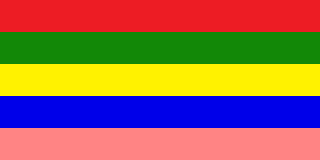
Saraikela State also spelt Seraikela, Saraikella or Seraikella, was a princely state in India during the era of the British Raj, in the region that is now the Jharkhand state. Its capital was at Saraikela.
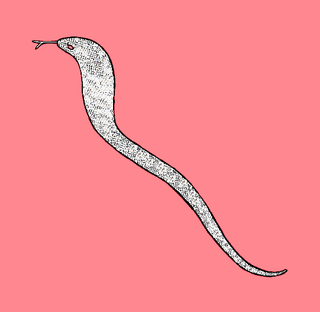
Pal Lahara was a princely state in what is today India during the British Raj. It had its capital at Pal Lahara.

Hindol State was one of the princely states of India during the period of the British Raj. Its former territory is now part of Dhenkanal district. The state's former capital was the town of Hindol, Odisha. Until 1947, it was not part of British India but was subject to the suzerainty of the British crown, under the Orissa States Agency.

Kalahandi State, also known as Karond State, was one of the princely states of India during the period of the British Raj. It was recognized as a state in 1874 and had its capital in Bhawanipatna. Its last ruler signed the accession to the Indian Union on 1 January 1948. The present titular head of the state is Anant Pratap Deo who resides in the Kalahandi Palace in Bhawanipatna

Bonai State was a princely state during the British Raj in what is today India. It was one of the Chota Nagpur States and had its capital at Bonaigarh, located in the present-day Sundergarh district of Odisha. It had an area of 8,907 square kilometres (3,439 sq mi) and a population of 24,026 in 1892 with an average revenue of Rs.60,000 in 1901.

Talcher State was one of the princely states of India during the period of the British Raj. Talcher town in Angul District was the capital of the state and the seat of the Raja's residence. Its last ruler signed the accession to the Indian Union in 1948.

Kharsawan State, also spelt Kharsua or kharaswan, (Odia:ଖରସୁଆଁ)was a princely state in India during the era of the British Raj. The state had a privy purse of 33,000 Rs.It was one of the Odia Princely states of India during the period of the British Raj and the major language spoken in the area is Odia.

Daspalla State was one of the princely states of India during the period of the British Raj. Its capital was Kunjabangarh, located in present-day Nayagarh district, Odisha.

The Bhanja dynasty is a dynasty that originated in the northern and central regions of modern Odisha before the Gupta Empire became an imperial power. The dynasty, of ancient local Kshatriya lineage as documented by Hermann Kulke, succeeded the Vindhyatabi branch of the Nagas of Padmavati, who ruled from the Keonjhar district of Odisha and included Satrubhanja of the Asanpat inscription. The Bhanj later became feudatories of the Bhauma-Kara dynasty.

Mayurbhanj State was one of the princely states of India during the period of the British Raj. It was one of the largest states of the Eastern States Agency and one of the three states of the Bengal States Agency. The emblem of the state were two peacocks for according to legend the ancestors of the ancient rulers originated from a peafowl's eyes.

Khandpara State was one of the princely states of India during the period of the British Raj. It was located in present-day Nayagarh district, Odisha.
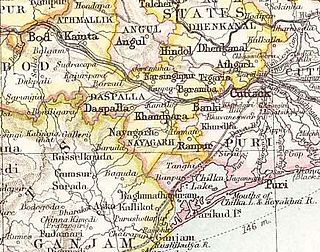
Nayagarh State was one of the princely states of India from the period of the British Raj. It was located in present-day Nayagarh district, Odisha.

Kanker State was one of the princely states of India during the period of the British Raj. Its last ruler signed the accession to the Indian Union in 1947.

Narsinghpur State was one of the princely states of India during the period of the British Raj. The state was founded in the 17th century and had its capital in Narasinghpur town. The last ruler of Narsinghpur joined the state to the Indian Union in 1948 and Narsinghpur state was made part of the Cuttack district of Odisha.

Tigiria State was one of the princely states of India during the period of the British Raj. It was located in present-day Tigiria block of Cuttack district, Odisha. Although it was the smallest of the states of the Orissa States Agency it was the most densely populated. The last ruler of Tigiria joined the state to the Indian Union in 1948.

Rairakhol State was a princely state during the British Raj in what is today India. It was one of the Chota Nagpur States and had its capital at Rairakhol (Redhakhol), located in the present-day Sambalpur district of Odisha. It had an area of 2,157 square kilometres (833 sq mi) and a population of 26,888 in 1901, the average revenue was Rs.55,000 in 1904.
Kujang Estate was a small zamindari or estate located on the northern coast of the present-day state of Odisha in India. It was founded by Mallik Sandha, a teacher who established the Sandha dynasty. According to several sources, the Kujang kings enthusiastically patronized and spread education in their lands and played an important role in the Indian Independence Movement in Odisha.
